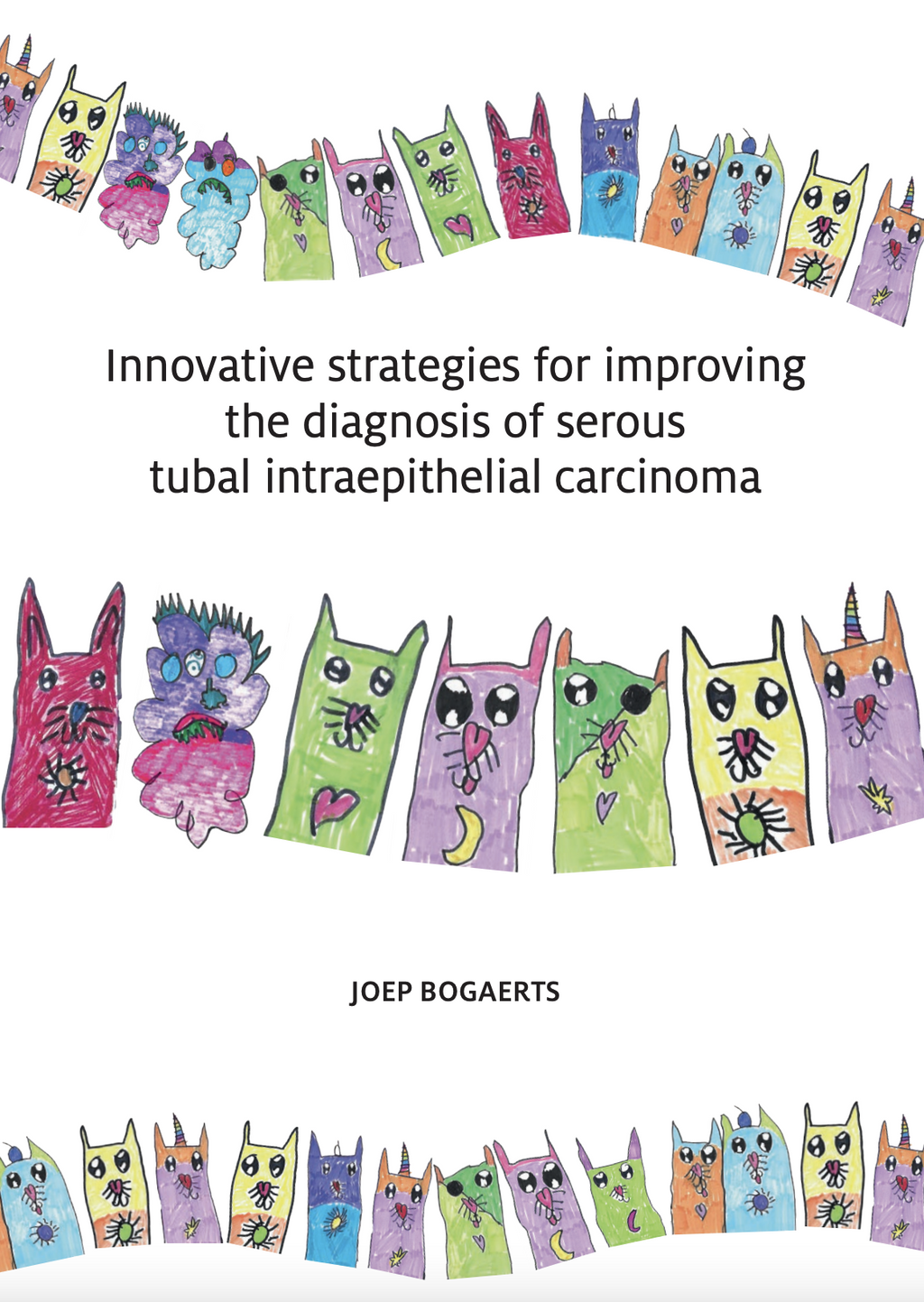Innovative strategies for improving the diagnosis of serous tubal intraepithelial carcinoma
J. Bogaerts
- Promotor: J. van der Laak and J. de Hullu
- Copromotor: M. Simons
- Graduation year: 2024
- Radboud University
Abstract
Reliable and reproducible diagnosis of STIC is important for three reasons. First of all, a diagnosis has important prognostic implications for individual patients and may (in the future) hold clinical implications as well. Secondly, reliable STIC diagnosis is important in safely investigating alternative risk reducing interventions for those patients who are at an increased risk of developing HGSC. It is vital that we can safely diagnose or exclude a diagnosis of STIC, in this setting, because when STIC is present, the patient should have an oophorectomy without delay. Thirdly, STIC and other precursor lesions play an important role in the pathophysiology of HGSC. In order to better understand this disease, which holds a substantial burden, reliable STIC diagnosis is needed. Unfortunately, the reproducibility of STIC diagnosis, based on H&E stained slides is moderate at best. The general aim of this thesis was therefore to try to improve STIC diagnosis.
Chapter 2: Sets out an overview of the diagnostic approach of STIC. We performed a systematic review and meta-analysis, covering the use of grossing protocols, morphological criteria, and the use of immunohistochemical stains (IHC).
Chapter 3: Describes a Delphi study on STIC diagnosis amongst a group of expert gynecopathologists. The experts' consensus statements form the basis for a set of recommendations, which may help towards more consistent STIC diagnosis.
Chapter 4: Reports the development of a deep learning model, capable of automatically detecting STIC/STIL in digitalized whole slide images.
Chapter 5: Describes a reader study in which we analyzed the effects of the deep learning model on the performance of pathologists and pathology residents in diagnosing STIC/STIL.
